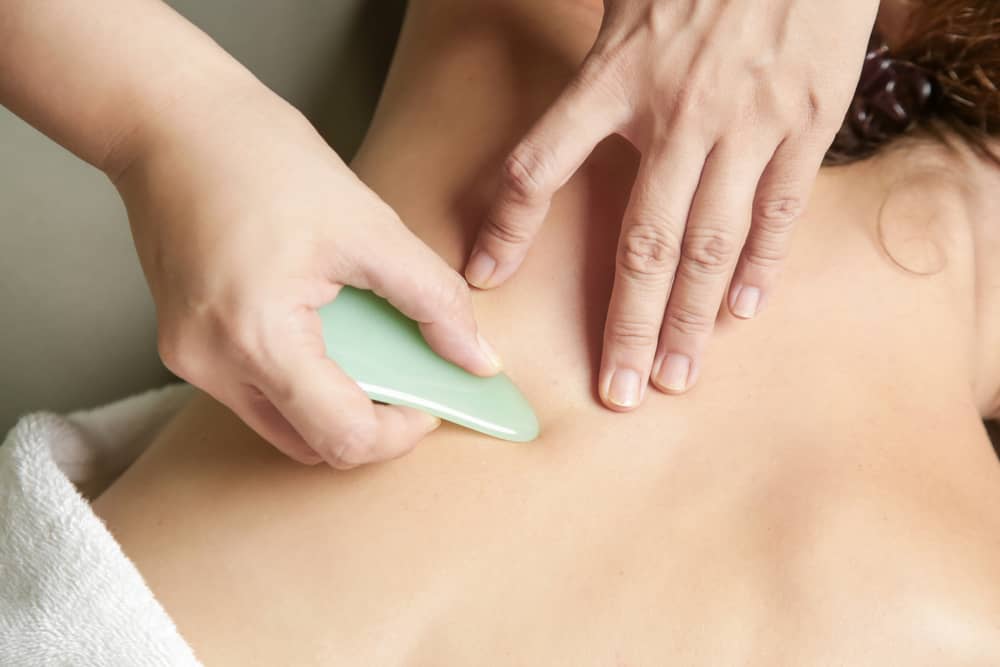Everything You Should Know About the Guasha Massage Tool

Guasha massage is an ancient healing technique that recently gained popularity due to its effectiveness in releasing muscle tension, improving circulation, and promoting wellness. Our licensed massage therapist here, at Bodywise LLC, uses specialized Guasha tools to help our clients fully reap its benefits. Not all Guasha tools are created equally, however.
In this blog, we are going to look at the various types, shapes, and materials Guasha tools are made from so you understand how they work and how they contribute to an effective massage.
What is a Guasha Tool?
The Guasha tool is a special tool that is used in this style of massage to gently scrape the skin and stimulate blood flow, thus allowing the body to release built-up tension. Whether administered appropriately by a qualified massage professional, it serves in the breakup of stagnation lying underneath the skin, thus enabling energy and fluids to flow easily across the body. Eventually, this reliefs pain, reduces inflammation, and enhances recovery in areas it targets.
Types of Guasha Tools
There are many types of Guasha tools for their specific function in Guasha massage. Some of the most commonly used tools include:
Flat Guasha Stones
The flat ones are supposed to be used on broad strokes across larger areas, such as one’s back or legs; the flat surface will distribute even pressure and, hence, would be good for general massage purposes.
Curved Tools
The basic design conformation of the body’s natural contours allows for more specific areas that are best addressed, such as the shoulder or neck. This design allows deeper pressures in a very controlled manner to be administered by the massage therapist.
Edged tools are sharper, thus intended to scrape more deeply, reaching further layers of muscle knots for greater mobility at sites with chronic tension.
Shapes of Guasha Tools
Guasha comes in various shapes, each suited to different areas of the body and pressure levels. Here are some common shapes you may come across:
The Guasha devices shaped such as fish are equally applicable to larger and smaller areas. The design allows for multiple positions of grip, enabling the therapist to easily switch and regulate the amount of pressure applied or even the direction of movement during massage.
Wing-shaped tools are designed for large areas, such as the back, thighs, or calves. A wide surface allows the tool to apply the working edge to more skin with each stroke. This serves to promote better circulation and relieve tension in the muscles.
Heart-shaped or Dolphin-shaped Tools
Most of these tools are used for Guasha of the face, as their gentle curves thus allow for delicate pressure application. They work great in sensitive areas, such as the face or neck, where soft manipulation is necessary to reduce puffiness and improve skin tone.
Materials Used in Guasha Tools
The material with which the Guasha tool will be made will play an important role in how this massage will feel and the effects it will have on the skin. Following are some of the most used materials:
Jade
Being one of the cooling materials, jade is very popular in traditional Guasha massages. It is said to be balancing, hence a more wanted tool for facial treatments and body massages.
Rose Quartz
Rose quartz is a very smooth and soft stone, thus, it is generally used on the face when doing Guasha. It is claimed that rose quartz tools ease relaxation and help skin health, thus being perfect for clients wanting a more soothing experience.
Bian Stone
Slightly more obscure, this is also quite an effective material due to its high mineral content and is said to carry additional healing properties. This stone is great for deep-tissue Guasha massage, since its special composition can easily help raise circulation and relieve pain.
Horn and Metal
These are used for more aggressive Guasha massage treatments and are harder and more durable. They can be used with deeper, harder strokes to apply firm pressure. Both of them work great against any sort of chronic pain or stiff muscle.
How to Choose the Right Guasha Tool
The effectiveness of the treatment largely depends upon the choice of the Guasha tool used. Several factors to consider when choosing Guasha tools include:
Personal Skin Sensitivity
For sensitive skin, a massage therapist may recommend the use of jade or rose quartz because they are much smoother and softer on the skin.
Target Area
For larger areas such as the back or thighs, wider and flatter tools are required, whereas areas smaller, such as that of the face, require heart-shaped or dolphin-shaped ones.
See a Massage Therapist
If you do not really know which tool is the best for your needs, you always have a great reason to consult professional massage therapists. They will help you in selecting the right Guasha tool based on your needs and treatment objectives.
The Role of the Massage Therapist in Guasha
A Guasha session heavily relies on the art and expertise of a massage therapist for its success. Their knowledge enables them to use an appropriate tool, manipulate pressure, and vary the technique according to the needs of your body. At Bodywise LLC, our licensed massage therapists have become highly proficient in using the Guasha tools during treatments intended to relieve tension, improve circulation, and foster overall well-being.
Wrapping Up
The success and effectiveness of a Guasha massage depend on choosing the right Guasha tool. Whether it is to relieve tension in the muscles, improve skin health, or reduce inflammation, this is just what you require. For the benefits that ensue from Guasha to be well experienced, a session is always important to one of our licensed and trained massage therapists here at Bodywise LLC.